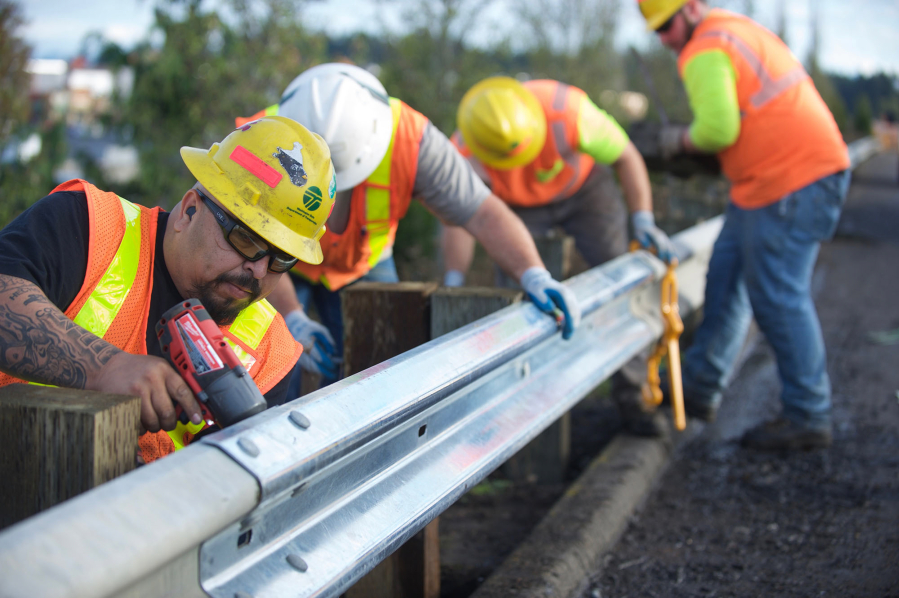From littered and weed-laden highway shoulders to dented and mangled guardrails, Clark County resident Robert Schalk sees a lot of work that isn’t getting done by the Washington State Department of Transportation.
In at least a few instances, Schalk said he’s seen bent guardrails that weren’t immediately replaced, but instead were blocked with road cones for long periods of time. Schalk, who worked as an engineer for the Oregon Department of Transportation for more than three decades, said he worries about the safety issues if the work isn’t done right away.
“We all pay for (maintenance) with our gas taxes and have put our trust in (WSDOT) to make our roads as safe as current technology recommends,” he said.
WSDOT officials said they’re well aware of the work needed on local highways, but with a $9.7 million maintenance backlog in the Southwest Region, which includes Clark and six other counties, they’re forced to prioritize.
“I’m frustrated as well,” said Glenn Schneider, WSDOT regional maintenance manager. “I drive the highways. I see the damaged guardrails. I see the weeds. And I’d like to do more than we are, but we’re limited by our budget.”
When the Legislature has decided on WSDOT’s budget in recent years, it emphasized building new infrastructure rather than repairing and maintaining what’s already out there. By law the agency can’t take money out of the construction budget and divert it toward maintenance.
“The money is going into the glamorous things like new interchanges and new lanes, but we don’t increase the maintenance budget to go along with the added improvements,” Schneider said.
He understands the dynamic. If you’re a politician,”You’re not going to get a lot of votes by saying ‘I’m going to do maintenance,'” he added.
WSDOT regional spokesman Bart Treece said maintenance funding has increased slightly over the years, but not fast enough to keep pace with the infrastructure being built.
As a result, WSDOT has cut back on landscaping, sweeping and litter control. Instead, it looks to work with cities, volunteer organizations and Department of Corrections work crews to help fill the gaps.
Schneider said the agency also is looking into alternative fuel and electric vehicles to reduce costs.
The Connecting Washington transportation budget passed in 2015 funded $16 billion in transportation projects over the next 16 years, $9.4 billion of which will go to state highways and local roads and $1.4 billion of which goes to state highway maintenance, operations and preservation.
Statewide, WSDOT has a roughly $90 million maintenance backlog.
WSDOT sorts maintenance priorities using a letter grade system. Things that affect public safety like snow removal are at the top with an ‘A’; guardrails are near the top with a ‘B’; litter removal and vegetation management — things that are aesthetically pleasing — sit at the bottom with an ‘F’ rating.
If a guardrail is damaged but still offers some protection, WSDOT places the cones in front of it to warn drivers until it’s repaired.
How long the guardrails go unfixed depends on how badly they’re damaged and also the weather. WSDOT tries to delay guardrail repair until the rainy season.
“When we have good weather we’ll do pavement repair,” Treece said.
When a vehicle crashes into a guardrail, the agency’s policy is to seek reimbursement for the damage. Otherwise the repair costs have to be absorbed by the maintenance budget.
“Which is already stretched thin,” Treece said of the budget.




